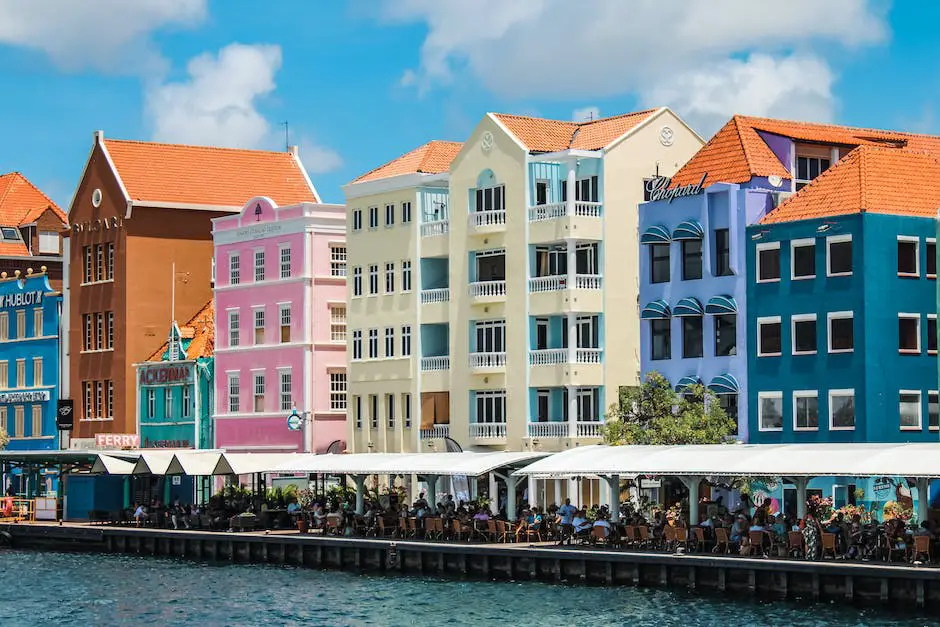
Imagine strolling through a vibrant tapestry of history, where each building tells a story of cultural fusion and architectural evolution. This is the essence of Willemstad, Curaçao’s capital, a city where the architecture is as colorful and diverse as its past. As we meander through the streets, let’s unravel the layers of time that have shaped this UNESCO World Heritage site into the visual feast it is today.
The Roots of Willemstad’s Architectural Charm
Willemstad’s architecture is a kaleidoscope of Dutch, Spanish, and Portuguese influences, with a Caribbean twist. The city’s foundation dates back to the 17th century when the Dutch established a trading settlement. The oldest of the four historic districts, Punda, was the first to be developed. Here, you’ll find a grid pattern of streets, reminiscent of European cities, but with a tropical flair.
The buildings in Punda are a testament to Dutch colonial architecture, with gabled roofs and ornate facades. Yet, they’re painted in a spectrum of pastel hues, a decision made to combat the glare of the Caribbean sun. This unique blend of European design and island color has become a signature of Willemstad’s charm.
Expansion and Diversification
As Willemstad grew, so did its architectural diversity. The district of Otrobanda, developed in the 18th century, showcases a more organic street layout. It reflects a blend of cultures, with a mix of grand mansions and modest dwellings. The Scharloo district, once home to wealthy merchants, boasts impressive mansions that speak of Curaçao’s prosperous trade era.
These neighborhoods highlight the evolution from strict Dutch designs to a more eclectic style. Influences from Jewish settlers and African slaves brought new materials and techniques, adding to the city’s architectural mosaic.
Modern Influences and Preservation
In the 20th century, Willemstad embraced modernity while honoring its past. Newer constructions have often incorporated elements of traditional styles, ensuring a harmonious blend with the historic environment. The city’s commitment to preserving its architectural heritage is evident in the meticulous restoration projects that have kept the historic districts vibrant and alive.
Today, walking through Willemstad is like stepping into a living museum. The care taken to maintain the integrity of the city’s architecture is a testament to its cultural value. It’s a place where the past is not only remembered but celebrated in every corner.
Willemstad’s Architecture: A Reflection of Its People
The architecture of Willemstad is more than just a visual treat; it’s a reflection of the island’s melting pot of cultures. The city’s buildings are like pages from a history book, each structure narrating a chapter of Curaçao’s story. From the Jewish Synagogue to the African-inspired round huts, each element is a piece of the cultural jigsaw that makes up this island nation.
It’s this cultural richness that has earned Willemstad its UNESCO World Heritage status. The city is a prime example of how architecture can encapsulate the essence of a place and its people.
FAQs About Willemstad’s Architecture
- What makes Willemstad’s architecture unique?
Willemstad’s architecture is unique due to its blend of Dutch colonial styles with Caribbean colors and influences from various cultures that have settled on the island over centuries.
- Can you visit the historic districts of Willemstad?
Yes, the historic districts of Punda, Otrobanda, Scharloo, and Pietermaai are open to visitors and offer a rich experience of the city’s architectural heritage.
- How is Willemstad preserving its architectural heritage?
Willemstad preserves its architectural heritage through active restoration projects, protective legislation, and by promoting awareness of its historical value among locals and visitors alike.
Conclusion: The Timeless Allure of Willemstad’s Architecture
In conclusion, Willemstad’s architecture is a vibrant narrative of its history. From the Dutch colonial structures of Punda to the eclectic mix in Otrobanda and Scharloo, each district tells a story of cultural exchange and adaptation. The city’s commitment to preserving its architectural tapestry ensures that this narrative will continue to enchant visitors for generations to come.
As we’ve explored the streets and stories of Willemstad, it’s clear that the city’s architecture is not just about buildings; it’s about the people and the cultures that have shaped them. It’s a living legacy that continues to evolve while honoring its past. For anyone with a love for history and design, Willemstad is a must-visit destination that offers an unforgettable journey through time.
So, whether you’re a real estate enthusiast, a history buff, or simply in search of beauty, Willemstad’s architecture is sure to capture your heart. It’s a city where every corner holds a surprise, and every facade tells a tale. Come and see for yourself the colorful canvas that is Willemstad – where the past is always present, and the buildings are as vibrant as the island’s spirit.